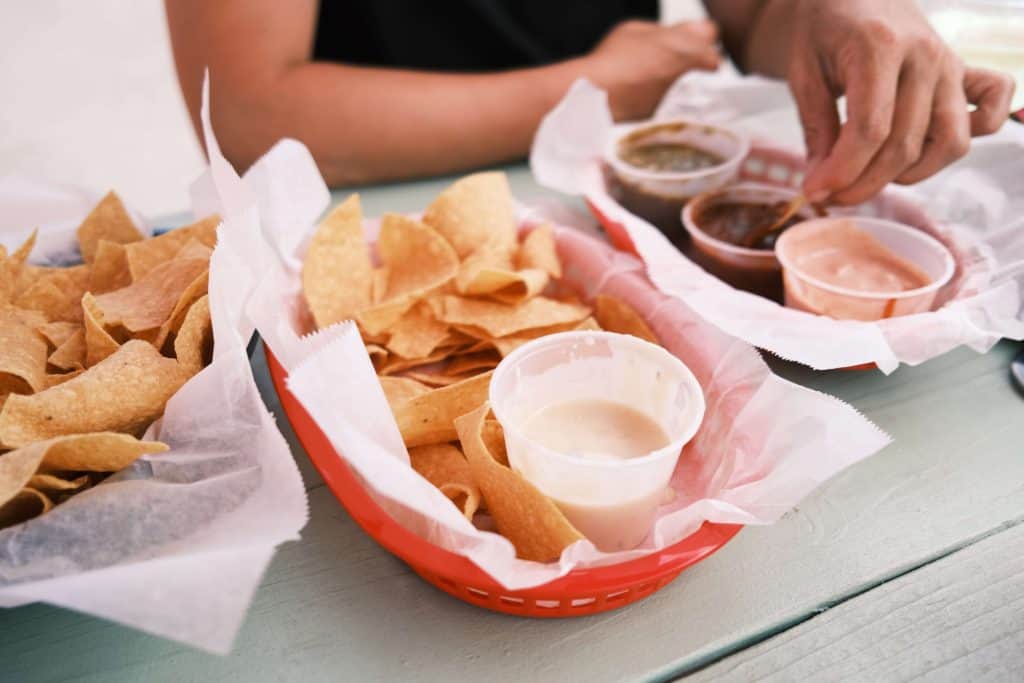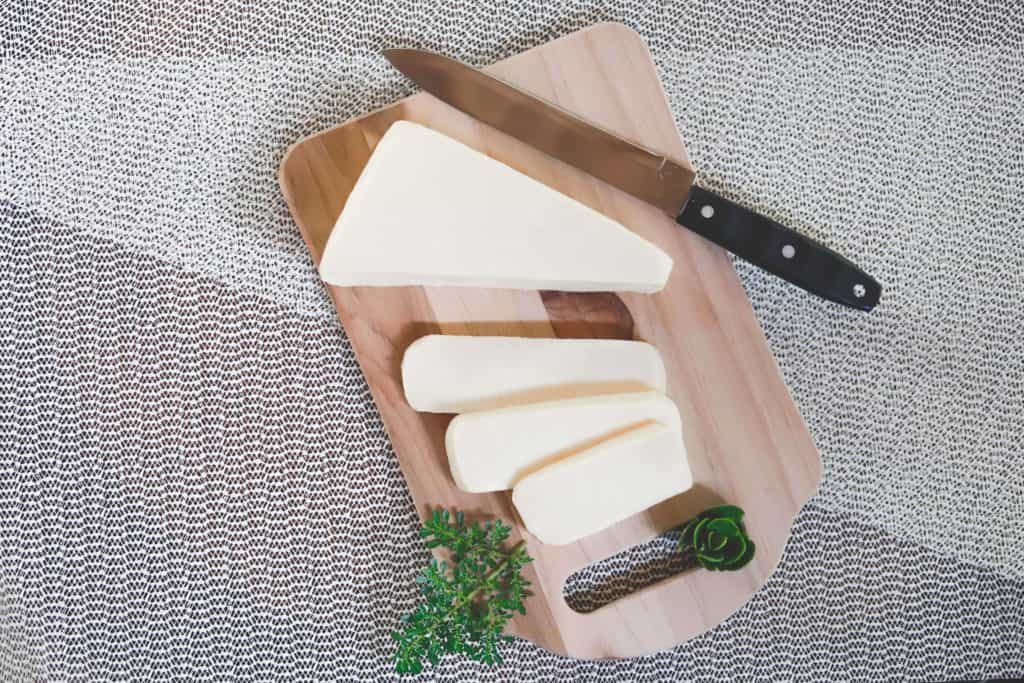- Queso Blanco is prepared with cow milk, whereas Queso Franco contains both cow and goat milk.
- If no wheat is added to cheese, then it is gluten-free.
- Queso has a mild flavor with a creamy and soft texture.
A traditional and classic recipe from Mexico, the Queso dip is relished by Mexicans. Once you have tasted it, there is no going back to any other dip.
If you love digging into grilled chicken or munching on nachos, you need a dip to complete the entire dish. Mayonnaise is a common one, but not many know about its potential alternative – Queso!
You can drizzle it on your picadillo or spread it on your homemade quesadilla. This magical dip will cast its charm on any food item.
Since queso is gaining immense popularity worldwide because of its rich, creamy texture and mouth-watering taste, many consumers are worried about its gluten content.
We are here to find the answers and unfold the truth. If you want to know if this creamy dip for your Mexican dish has gluten in it, stay tuned till the end.
Does Queso have Gluten? What is Queso?
Queso is a Mexican dip that many people have with their snacks or meals to enhance the taste and nullify the dryness.

It has a creamy texture that attracts many taste buds, which is why it is so popular nowadays. Its creaminess comes from cheese.
Various types of cheese are melted and blended to prepare this creamy and tasty dip. Since cheese is involved in its making, it is likely to contain gluten, which begs the question – Do dairy products contain gluten?
According to the Celiac Disease Foundation, dairy products are free from Gluten because the milk is directly sourced from animals with no natural gluten in their bodies.
The milk is sourced and pasteurized at high temperatures to free it from any bacteria or other possible elements that may harm human health. Once the milk is fit for consumption, the cheese-making process starts.
Since the naturally sourced milk has no gluten in it, all cheese is gluten-free.
However, some stores that sell queso mix flour in it to enhance the texture of the dip. Due to the inclusion of flour, the dip becomes gluttonized.
How to check if queso has gluten in it?
The answer is pretty simple! You should review the package label to know whether it is gluten-free. If the label says it is gluten-free, you can have it without worrying about any health risks.
Are you suffering from celiac and can’t consume even a pinch of gluten? If you mustn’t consume food items having gluten in them, it is better to prepare queso at home.
Even if labeled gluten-free, this Mexican dip can still either have a small amount of gluten in it due to the ingredients used or may get contaminated when kept with items having gluten.
Hence, to stay on the safer side, it is recommended to prepare queso at home.
What is Gluten, and why should you avoid it?
Are you on a gluten-free diet? Does a small trace of gluten trigger allergies in your body? If your answer is yes, you need to keep your eyes glued to this section.
When you add water to wheat flour to knead it into a dough, you must have seen that it acquires a gooey texture and sticks all over your palm.
Do you know why it happens? The answer is because of the gluten present in wheat.
Gluten is a protein that is most commonly found in grains. These groups of grains include barley, rye, spelt, wheat, etc.
Wheat is the most common grain with gluten in it that many households use. The gluten present in the flour, when it becomes active, provides elasticity to the dough and makes it light enough to rise while being baked.
Besides the rise and elasticity, this protein is also responsible for giving bread its soft and chewy texture.
While gluten is necessary for bread making, it has its adverse effects as well. What are the effects that gluten has on us? Let’s check them out.
This flour protein has two constituents: gliadin and glutenin, which combine to give bread the right texture and taste. It is gliadin responsible for the health risks that gluten has, which is why many people don’t prefer it.
People who have celiac disease, wheat allergy, gluten sensitivity, etc., are strongly forbidden from consuming products having this protein in them.
If a person with celiac or non-celiac gluten intolerance consumes this protein by any means, that person is likely to experience gastrointestinal distress, irritable bowel syndrome, and other symptoms.
What are the types of cheese having gluten in them?

If you love queso and want to have it without worrying about your health, you need to know which types of cheese are likely to have this protein in them and which are gluten-free.
Once you know which type has what, you can narrow down the list and opt for queso made from the cheese’s consumable group. So, let’s not waste time and drool!
Types of Cheese for queso with Gluten
The processed cheese that you usually get in the departmental stores labeled as low-fat, low-salt, etc., is likely to have gluten. That is because of the ingredients added to it while processing.
It would be best if you did not opt for cheese spreads to layer your dry bread because it also contains a small amount of this protein. This small amount comes from ingredients like flour and flavorings added to make it creamier and tastier.
Some queso variants also have vinegar in them to increase shelf-life. If you have checked the label and did not find any gluten warning, ensure that you check the type of vinegar used.
There are different varieties of vinegar in the market, one of which is malt vinegar. Since malt vinegar is made of gluten-rich grains, it is bound to have gluten in it.
If you come across the words “malt vinegar” in the list of ingredients present in your queso, discard it right away.
If we talk about the full-fat cream cheese, it is entirely gluten-free until it includes any wheat product like cheese straws, crackers, or pretzels.
Low-fat or fat-free cream cheese is also not to be opted for because the ingredients used to make that variety might be rich in gluten.
It is not always possible to locate the word “gluten” in the labels of queso. There are times when this word is not mentioned. However, you still need to be careful because other ingredients might have that protein.
Refer to the list below to look for gluten constituents in your queso and leave it at the counter as soon as you find them:
- natural color and flavor
- artificial color and flavor
- fillers
- emulsifiers
- thickeners
- spices
- vegetable gum
- food starch
- malt-based ingredients
- wheat flour or protein
- powdered cellulose
- maltodextrin
Types of cheese for queso without gluten
Do you want to know the cheese types free from this protein that might affect your health? We bring you the gluten-free cheese that you can use to prepare your delicious queso dip and enjoy it with your food:
- cheddar
- parmesan
- brie
- swiss
- feta
- goat
- ricotta
- provolone
- cottage cheese
Cottage cheese is naturally gluten-free. However, you still need to check the label before purchasing one to ensure that the batch of cottage cheese you are taking home is free from food starch and gluten.
There are several alternatives to cheese that you can use to stay entirely away from gluten. One such gluten-free option is avocado. You can prepare sauces and spreads of avocado and eat them with your regular food items.
Nutritional yeast is another such product on this list that is an alternative to dairy products. Sprinkle this yeast powder on your meal to pamper your taste buds.
Where can the cheese get contaminated with gluten?
Now that you know what the gluten-free cheese types are and their alternatives, it is time for you to see how a batch of cheese gets contaminated.
If the cheese used to make queso gets contaminated, your favorite dip would cause more harm to you than any good.
Though cheese is a gluten-free product, it can get contaminated in various ways if not appropriately handled. This section of this article will focus on the possible ways your Queso cheese can get contaminated.
1. At the Farm
The milk that becomes cheese is product of the milk-yielding animals at the farm. The farm is home to cows and buffalos, and many other animals and plant products.
What if the farm from where the milk comes from also grows wheat?
There are many possibilities of milk getting contaminated with wheat. If that happens accidentally, no one will ever know that your queso made with the cheese of that contaminated milk contains gluten.
2. At the Factory
Cheese-making factories deal with many products that are included in queso and other similar dips. The products might come in contact and mix to produce a batch of queso cheese containing gluten.
3. During Transport
Another possible place of cheese contamination is during transport to the queso-making factory. If kept beside a gluten-rich product or mold grows in such conditions, the dip is likely to have the protein.
4. In Restaurants

There is flour, malt-based food, cheese of different kinds, and many other products that can contaminate the queso, which is one day destined to become your favorite dip.
5. At the Counter
If you have ordered food at some takeaway food joint, your cheese and queso will likely get contaminated. Since the equipment used to cook and slice is almost the same, the chances of contamination are very high.
What are the different variants of the queso dip that you can have?
Are you ready to have some gluten-free queso dips? Let us check out some of the incredible variants of the classic Mexican queso that you can relish.
- Spicy Chorizo Queso Dip
This dip has pickled jalapenos, cilantro, whole milk blended with the hot green chilies, and Queso Blanco.
- Crock Pot White Queso Dip
It has a silky texture and salty undertones of butter and cheese mixed with Queso Blanco. There is a pinch of garlic powder in it with milk and taco seasonings.
- Vegetarian Chili Con Queso Dip
It is a hot sauce with a dash of chili, roma tomatoes, onions, and black beans. These items are simmered with velveeta queso blanco to enrich the flavors and blend them.
- Hoosier Corn Queso Dip
This queso dip has sour cream giving it an unusual taste that pampers your taste buds. The Chiles Chili Seasoning mix adds to the flavor and makes it spicy so you can enjoy it with anything.
Wrapping Up the question – does queso have gluten
The queso dip is famous worldwide, and many people love to use it with everything they eat. Its creamy texture and mind-blowing flavor have won many hearts.
Despite being so popular, many people deprive themselves of it, fearing that it has gluten.
Since queso is made using cheese, it is entirely safe for consumption both by individuals suffering from celiac and following a strict gluten-free diet.
You only need to keep certain things in mind, like checking the list of ingredients mentioned on the queso pack label.
This dip, when sold at the stores, is more prone to contamination. Hence, always check when buying from the stores. If you want to stay away from the fear surrounding you, try making this dip at home.
You can buy fresh cheese from the store and read the recipes available online to make the perfect dip that you can always have.
You need not stay away from this Mexican delicacy, fearing gluten, which can be easily avoided.